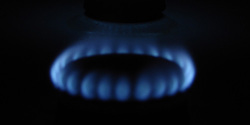

Nest has released its first summary of field data on carbon monoxide (CO) events, using its internet connected alarms which provide real time insight into the incidence of high CO levels in homes.
In October 2013, Nest launched a combined smoke and carbon monoxide detector, Nest Protect - an alarm connected to Wi-Fi designed to give people information they need to stay safe. The alarm was installed in hundreds of thousands of homes across the UK, Canada and the US. Nest Protect gives self-reported data and anonymous information on the homes it protects, without requiring people to be at home and report the event.
The recent white paper by Nest shares information on CO events across the UK and North America from November 2013 to May 2014, highlighting that at least one million households across the UK and North America are exposed to high levels of carbon monoxide each year.
The report found that 0.15% of homes in the UK, US and Canada experienced a CO event each month, and over 0.65% of homes were exposed to carbon monoxide over the duration of the study period .
Nest found there are higher incident rates during the colder months than the warmer months, which is linked to increased used of heating systems during winter.
Nest Protects in the UK experienced 1.64 times more CO events than Nest Protects in North America over the 6 months. Nest has attributed the higher carbon monoxide exposure in the UK to British Standards Institution (BSI) standards having lower CO thresholds.
For the majority of CO events, CO levels did not exceed 200ppm at any point during the event, with the length of exposure ranging from 3 minutes to over 24 hours. However, in the UK, the median peak CO level reached during events was 452ppm, significantly higher than the median value across all Nest devices.
In the UK, CO poisoning accounts for around 50 fatalities and 4,000 medical visits per year. The study reaffirms the importance of CO alarms but it shows that less than half of consumers in the UK and US have these alarms. CO alarms are not mandated everywhere in the country, and existing requirements often only cover new construction or renovations.
If you'd like to keep up-to-date with the latest developments in the heating and plumbing industry, why not subscribe to our weekly newsletters? Just click the button below and you can ensure all the latest industry news and new product information lands in your inbox every week.